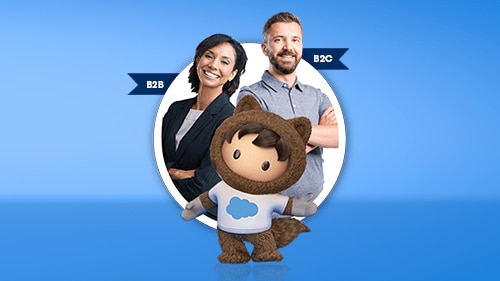How To Optimize the Consumer Goods Value Chain Model To Be More Agile and Relevant



Consumer goods companies must put the customer at the center of their business — and not just the end consumer. B2B customers want the same great experiences as consumers, so that means optimizing your full value chain to be flexible.
The pace of change in the retail and consumer goods (CG) industries has been mind-blowing — and will evolve even more in the next 10 years than it has in the past 40 years. The democratization of choice is the reason why I can order an oat milk cappuccino in the morning and a seltzer beer at dinner. Consumer trends are driving product innovation at an unprecedented pace. To add to this, increasing market complexity is why I can order workout clothes on my mobile device from the backseat of a rideshare or within a point-of-sale terminal at a coworking space. The convergence of consumer taste, technology, and point of sale dispersal is creating an entirely new landscape.
Today, everyone goes through a different digital journey, whether it’s for a bag of potato chips or a large household item. Because of this, according to Salesforce research, 54% of consumers expect companies to transform how they engage, and 62% expect engagements based on actions and behaviors.
For CG companies, this means putting the customer at the center — and not just the end consumer. B2B customers want the same great experiences as consumers. The two criteria to meet these expectations?
- An agile organizational structure and ecosystem that serves B2B and B2C customers
- Connected experiences that deliver hyper-relevant products and services
Let’s dig into each of these to unlock how CG companies can optimize the value chain.
Enhance retail execution and interaction
Retail accounts for 95% of CG sales. But planning and executing through retail channels is increasingly difficult. Every store is different with different consumers and different products. Getting every component right is called the “the perfect store,” hitting on these three areas:
- Right stock —> Right store
- Right place —> Right display
- Right promo —> Right time
In late 2019, Salesforce launched Consumer Goods Cloud to integrate planning and execution with cloud technology’s flexibility and artificial intelligence (AI) for smart selling. Through the retail execution capability, CG companies solve these three problems:
- Visit planning and optimization. District sales managers use a tool to add multiple store visits for area reps. The right rep goes to the right store in the most direct way with route optimization. They walk in with a smart task list (built and prioritized by AI) from an app — based on store needs such as a promotions check and a compliance check.
- Delivering the perfect shelf, faster. Reps capture real-time shelf and inventory data based on their task list and snap a photo of the shelf. Visual recognition identifies and quantifies the products for a percentage of share of shelf (previously a manual process); AI also analyzes the photo to determine if KPIs and planograms are correct.
- Real-time order capture. Reps place orders if they see products are running low — with store manager approval. They can also grow business in-store by selling on promotions and taking orders based on intelligent recommendations in their app.
By optimizing all of these activities, reps deliver growth and customer satisfaction, spending more time building great relationships in the store that drive business — and eliminating time spent counting individual products.
Connect the consumer experience
Going direct-to-consumer is no longer a nice-to-have for CG companies. Consumers want a relationship with every brand.
This used to be unprecedented for CG companies, but today, the same platform that drives B2B engagements can power direct connections with consumers too. Building a 360-degree view is based on consolidated data from past purchases, interactions, and search behaviors across touchpoints. Armed with this data, CG companies tap into the places where consumers start their purchase journeys, such as social media, and follow them through to fulfillment and service, whether that’s online or in-store, with personalized messaging and product recommendations.
But that’s the straightforward version of a consumer journey, and we all know that’s not always the case. Connecting all your systems on a single platform also allows CG companies to launch abandoned cart campaigns. It creates a continuous relationship by making it possible to proactively follow up with consumers at the right time with recommended replenishments of the products they regularly buy. If a consumer has a question or concern, service agents have a full view with a consumer profile — including a customer lifetime score — and AI helps them to resolve questions or concerns quickly with recommended next-best actions.
It doesn’t stop there: with the ability to mine and analyze data in the B2C domain — namely trends, consumer preferences, and social data — brands can get more efficient at launching new products, capitalizing on shopper and consumer trends faster.

Become agile and relevant
Focus on bringing the best-in-class B2B and B2C capabilities together into a single source of truth to drive relevance and agility — and tackle the toughest challenges in the industry.
To learn more about how to optimize the entire value chain, watch the full Consumer Goods Keynote from Dreamforce 2019.

























